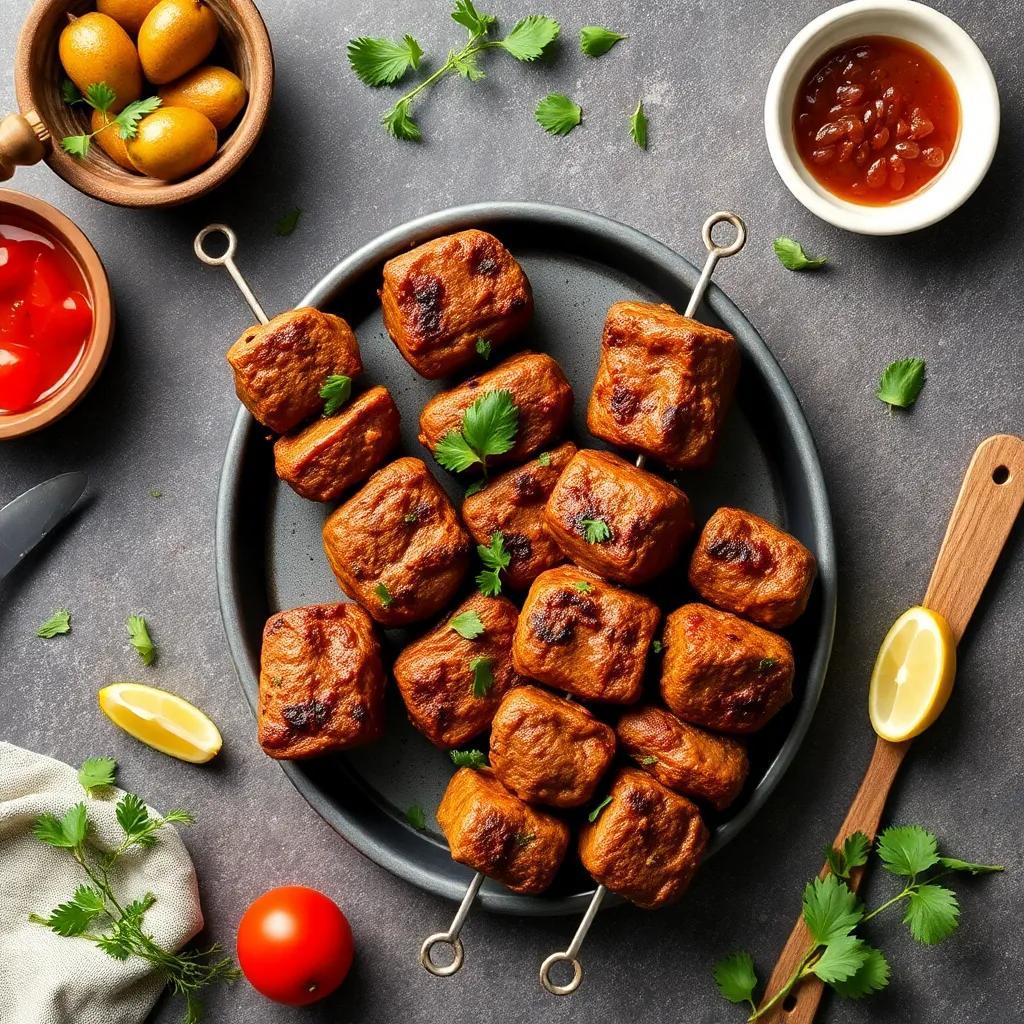Fresh & Flavorful Fattoush Salad: Easy, Vegan, Gluten-Free Recipe
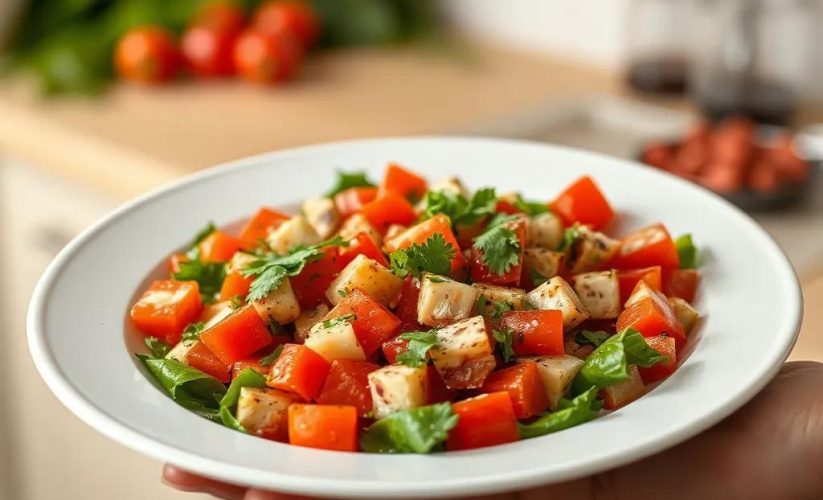
Fresh & Flavorful Fattoush Salad: Easy, Vegan, Gluten-Free Recipe
🌍 Cuisine: Middle Eastern
⚙️ Difficulty: Easy
Ingredients
Nutrition Facts
180
Instructions
- Toast the pita breads in the oven or on a skillet until crisp and golden. Let cool and break into bite-sized pieces. Set aside.
- Wash and chop the Romaine lettuce, cucumber, tomatoes, green onions, red bell pepper, radishes, parsley, and mint. Combine them in a large salad bowl.
- In a small bowl, whisk together the fresh lemon juice, extra virgin olive oil, minced garlic, ground sumac, salt, and black pepper to create the dressing.
- Pour the dressing over the chopped vegetables and herbs. Toss gently to evenly coat all ingredients.
- Add the toasted pita pieces to the salad and toss just before serving to retain the crunch of the bread.
- Adjust seasoning with additional salt, pepper, or lemon juice to taste.
- Serve immediately for the freshest texture, or chill briefly if desired.
- Enjoy your fresh, vegan, and gluten-free Fattoush salad as a light entree or a side dish!
Serving Suggestions
- Serve alongside grilled falafel or roasted vegetables for a complete vegan meal.
- Pair with warm hummus and gluten-free flatbread for a Middle Eastern-inspired feast.
- Top with toasted pine nuts or walnuts for added crunch and richness.
- Add sliced avocado for creaminess and extra nutrients.
- Sprinkle extra sumac or za’atar on top for enhanced spice and flavor.
- Serve chilled on hot summer days as a refreshing light lunch.
- Drizzle with pomegranate molasses for a sweet-tart twist.
Table of Contents
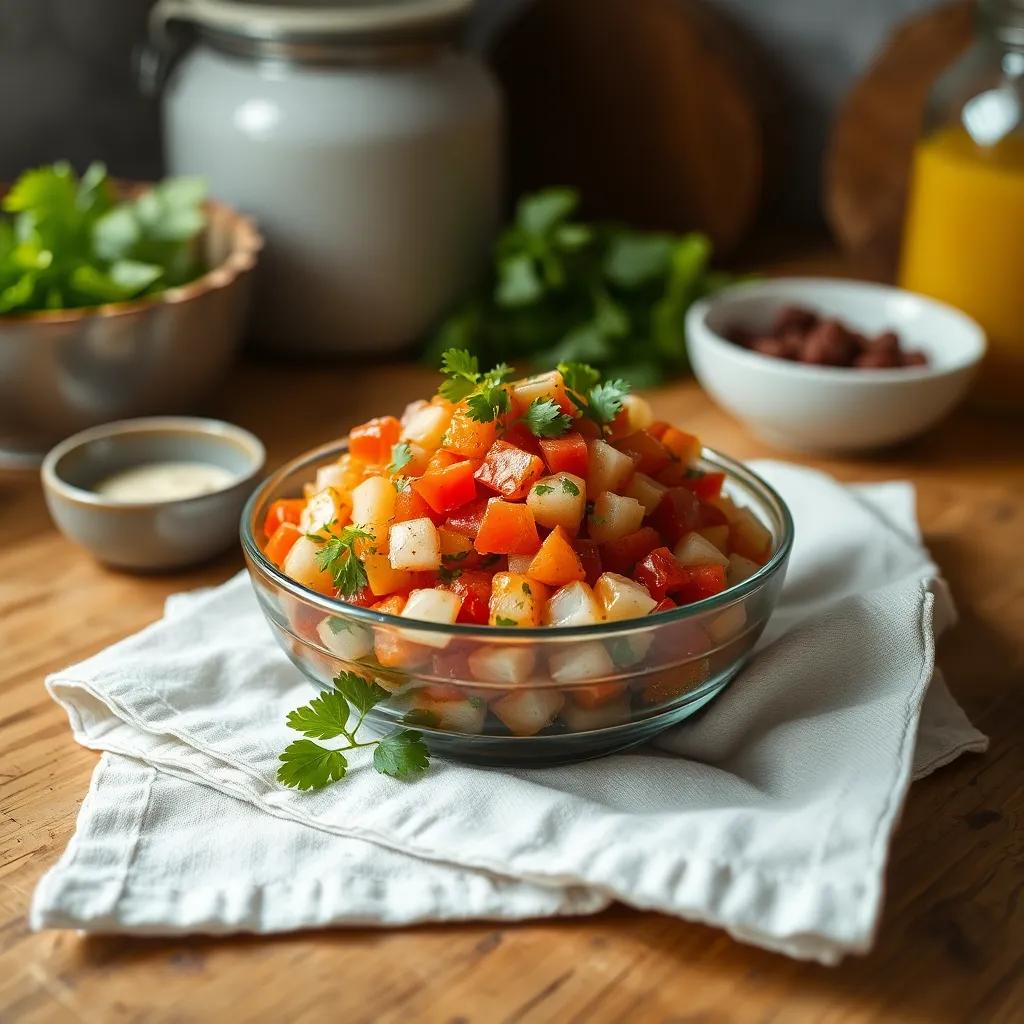
Intro
There’s something uniquely satisfying about a salad that bursts with freshness, texture, and vibrant flavors—all while being effortlessly easy to put together. This Fresh & Flavorful Fattoush Salad fits the bill perfectly. It’s one of those dishes that feels simultaneously light and hearty, making it a versatile choice whether you’re preparing a quick lunch, a colorful side for dinner, or a crowd-pleasing potluck contribution.
What makes this salad truly exciting is how it balances crisp vegetables and fragrant herbs with the unexpected crunch of toasted pita, creating a playful contrast in every bite. Its bright, citrusy dressing brings a zesty lift that awakens the palate without overpowering the natural goodness of the ingredients. Plus, it’s vegan and naturally gluten-free, so it easily fits into a variety of dietary preferences without sacrificing taste or satisfaction.
Ideal for warm-weather days, casual gatherings, or anytime you want a nourishing dish that feels as fresh as it tastes, this Fattoush Salad invites you to enjoy something wholesome and revitalizing without fuss. Whether you’re new to Middle Eastern flavors or a longtime fan, it’s a rewarding addition to your recipe collection that promises a delicious, no-stress eating experience.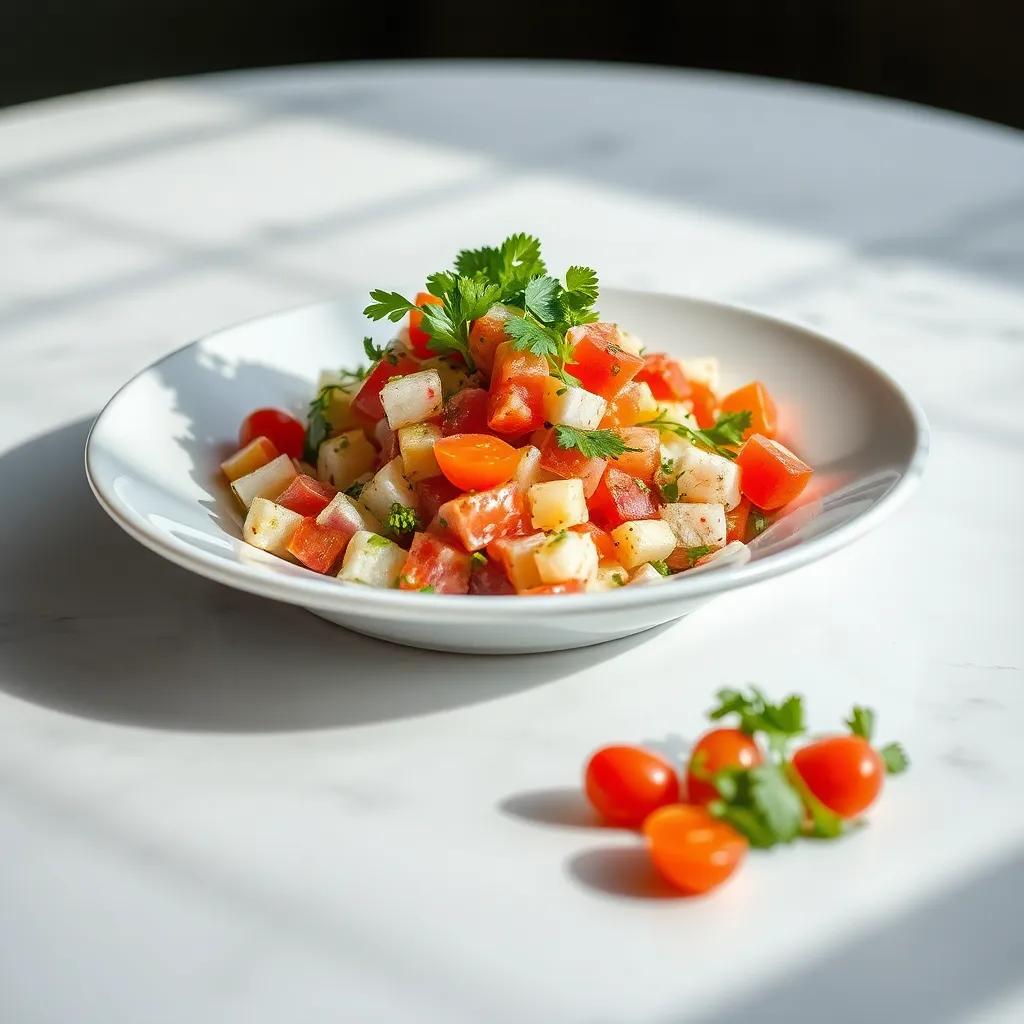
Ingredient Notes
Three ingredients stand out as the true heroes of this Fresh & Flavorful Fattoush Salad, each lending a unique character that elevates the dish beyond a simple veggie mix.
Sumac is a vibrant, tangy spice that’s deeply emblematic of Middle Eastern cuisine. Its reddish-purple powder brings a bright, lemony tartness that enhances the salad’s zing without relying solely on citrus. When selecting sumac, look for a fine, fresh powder with a deep color and fruity aroma—this indicates its potency. If you can’t find sumac nearby, a squeeze of extra lemon juice or a splash of vinegar can mimic its sour punch, though the floral undertones of sumac are hard to replicate fully.
Fresh herbs like parsley and mint are the salad’s fragrant backbone, providing layers of brightness and complexity. Parsley adds a fresh, slightly peppery note, while mint cools with a sweet, crisp aroma that enlivens every bite. When buying these herbs, choose bunches with vibrant green leaves that aren’t wilted or yellowed. To keep them fresh longer, store wrapped loosely in damp paper towels inside the fridge. If fresh herbs aren’t available, frozen chopped parsley is a reasonable substitute, but fresh is always best for that unmistakable bite of freshness.
Toasted pita bread pieces contribute the signature crunch and heartiness that distinguishes fattoush from other salads. They absorb dressing lightly yet maintain a satisfying crispness, creating delightful textural contrast. Opt for day-old pita when possible—it toasts up more evenly and crisply. For gluten-free needs, seek out certified gluten-free pita or crisp gluten-free crackers as a handy alternative. Toasting on a skillet with a drizzle of olive oil or in the oven until golden ensures a perfect crunch that won’t get soggy right away.
Understanding these ingredients and how to source or adapt them empowers you to perfect this salad every time. Their harmonious interplay is what turns fresh vegetables into a festive Middle Eastern classic that’s easy to love and even easier to customize.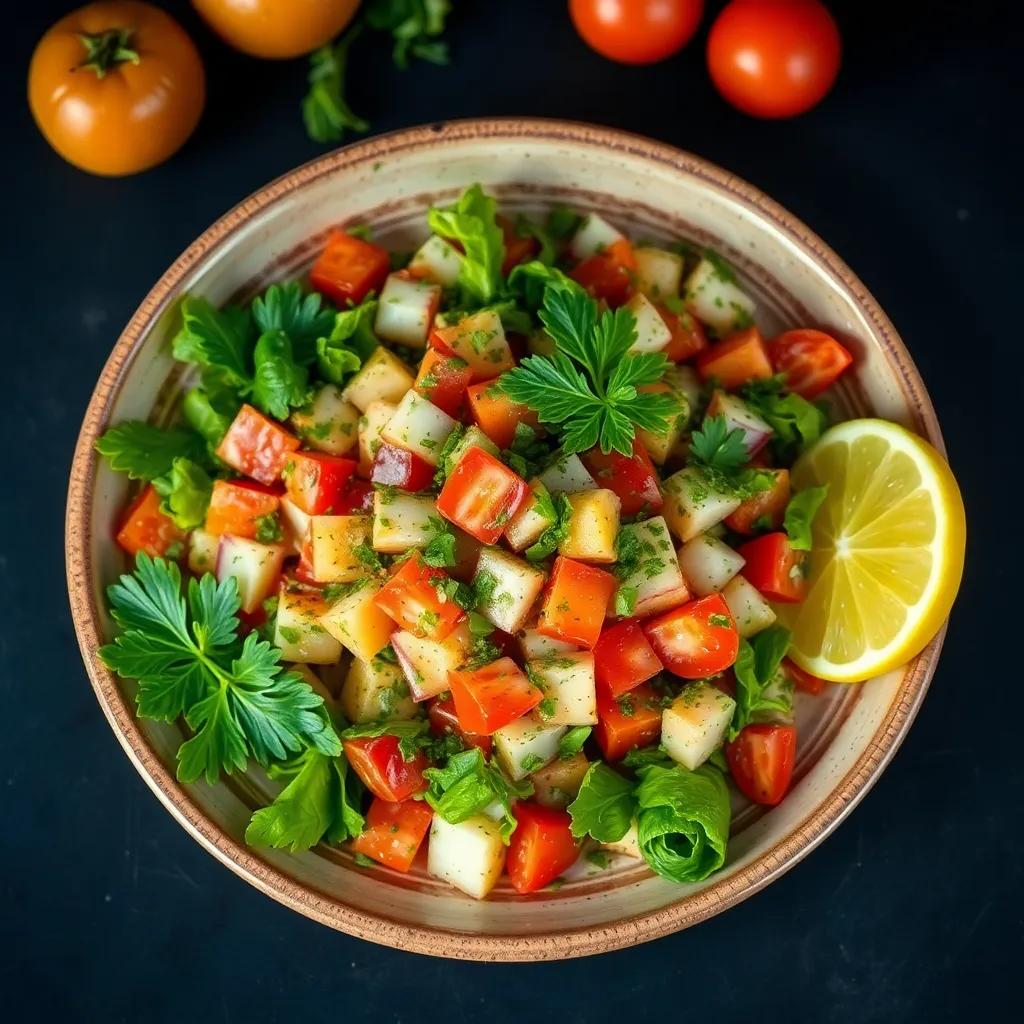
Tips & Variations
To elevate your Fattoush experience, consider these tips and creative twists that make the salad truly your own while respecting its vibrant, fresh character.
- Maximize Herb Freshness: Chop herbs just before tossing the salad to preserve their bright flavors. If you prefer an extra herby punch, try finely chopping some extra mint and mixing it directly into the dressing to infuse that fresh aroma throughout.
- Crunch Variations: While toasted pita is traditional, feel free to experiment with other crunchy elements. For a nutty twist, sprinkle toasted almonds, pistachios, or pumpkin seeds on top. If you want to keep it gluten-free but still crave crunch, crunchy chickpeas roasted with a touch of smoked paprika or cumin add delicious texture and depth.
- Sumac Swaps and Enhancements: If you don’t have sumac on hand, a sprinkle of lemon zest combined with a pinch of smoked paprika can mimic some of its bright, slightly smoky tang. Alternatively, layering in a drizzle of pomegranate molasses brings a similar sweet-tart complexity that complements the salad beautifully.
- Customize Your Veggies: Fattoush is wonderfully adaptable. Add diced avocado for creaminess, thinly sliced radishes or fennel for extra bite, or roasted beets for color and earthiness. In the summer, crisp snap peas or green beans can add fresh, seasonal crunch.
- Dressing Adjustments: The classic lemon-garlic-olive oil combo is simple and satisfying, but you can jazz it up by mixing in a small spoonful of tahini or a splash of apple cider vinegar for extra creaminess or tang. For a spicy kick, a pinch of cayenne or a few drops of hot sauce whisked into the dressing can awaken the palate.
- Make It a Meal: To turn this salad into a hearty, protein-rich dish, toss in cooked lentils, chickpeas, or small cubes of marinated tofu. Each addition brings more substance without compromising its vegan, gluten-free nature.
- Serving Timing: Add the pita chips just before serving to keep them crisp. If you prefer to prepare ahead, keep the components separate and combine when ready to eat.
- Dietary Tweaks: This recipe is naturally vegan and gluten-free when using suitable pita or crackers. For nut allergies, skip nuts or seeds. Low-sodium eaters can reduce added salt and increase fresh lemon juice and herbs for flavor without extra sodium.
By layering in these ideas, you can celebrate the traditional spirit of Fattoush while making it uniquely yours—whether you crave extra freshness, crunch, or richness. This flexibility is what keeps this vibrant salad endlessly enjoyable and perfect for any table.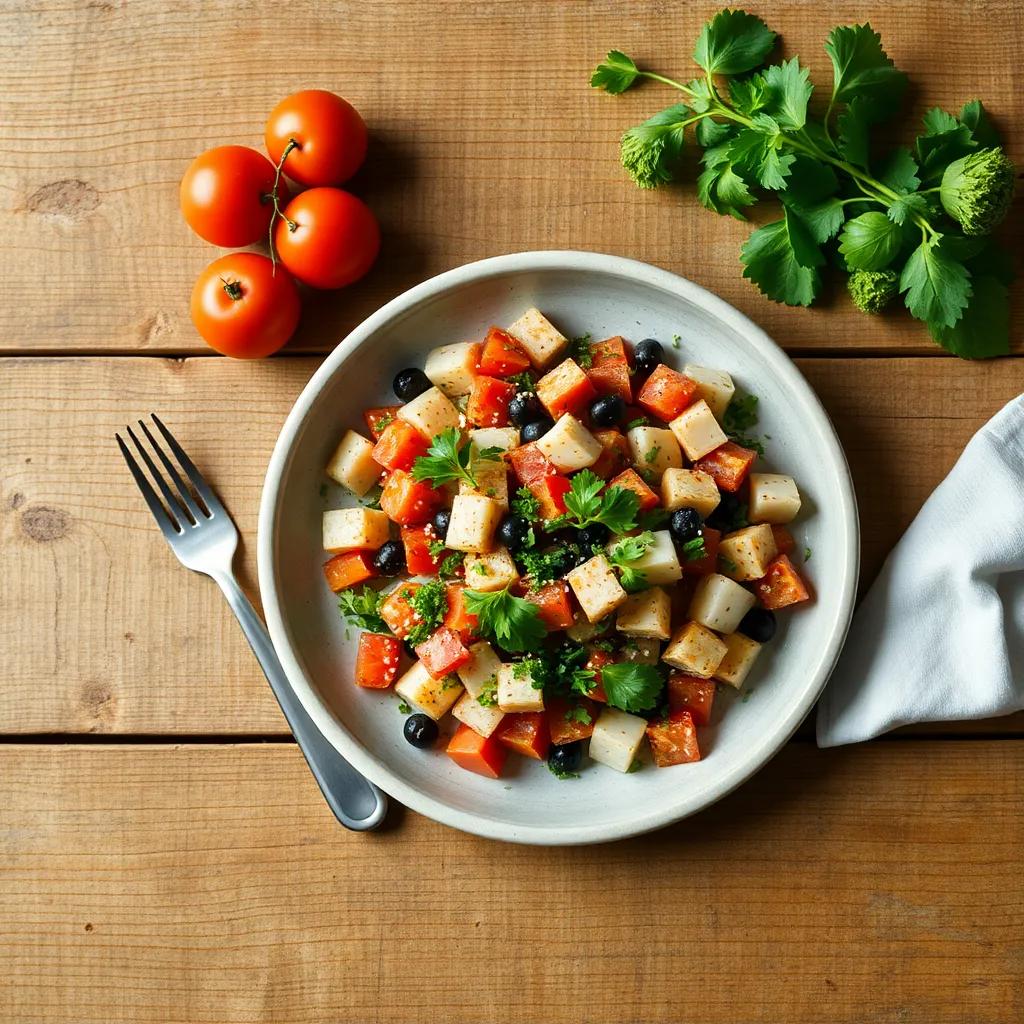
Leftovers & Storage
Leftovers of Fresh & Flavorful Fattoush Salad can be enjoyed thoughtfully with a few storage considerations to maintain its characteristic freshness and texture. Because this salad features crisp greens, fresh vegetables, and toasted pita pieces, it’s best enjoyed soon after preparation for maximum crunch and vibrant flavor. However, if you find yourself with leftovers, here’s how to extend their life without sacrificing quality.
Store the salad components separately whenever possible. Keep the chopped vegetables and herbs mixed with the dressing in an airtight container—glass or BPA-free plastic both work well—but reserve the toasted pita pieces in a separate container or a paper bag at room temperature. This prevents the pita from absorbing moisture and turning soggy. When ready to eat, simply add the crisp pita just before serving to revive that wonderful crunch.
If you’ve already combined the pita with the salad, try to consume the leftovers within 24 hours. The bread will soften as it soaks up the dressing, which changes the texture but can still be enjoyable, especially if you prefer a tender bite. Store the combined salad in the refrigerator in a sealed container, and give it a gentle stir before serving to redistribute flavors.
For best freshness, refrigerated Fattoush Salad leftovers are recommended to be eaten within 1 to 2 days. Beyond that, the herbs and leafy greens lose their vibrancy and will begin to wilt or release excess moisture, resulting in a less desirable texture. Freezing is not advised, as the fresh vegetables will become mushy upon thawing, and the dressing ingredients may separate.
As a practical tip for meal prepping, keep the salad ingredients portioned—store washed and chopped vegetables separately from the dressing and pita pieces. Assemble the salad freshly at mealtime to enjoy that signature brightness and crunch, especially if you plan ahead for lunches or quick dinners. Using airtight containers or mason jars with tight lids helps preserve the salad’s zingy flavors and aromas in the fridge.
If you want to revive slightly limp leftovers, a splash of fresh lemon juice and a quick toss can lift the flavors, while adding some extra fresh herbs right before serving brightens it up. Remember, this salad’s best qualities lie in its freshness, so treating leftovers with a little care ensures your next serving remains a delicious, vibrant experience.
Behind the Recipe
Fattoush salad carries with it the vibrant spirit of Middle Eastern kitchens, where fresh, simple ingredients are celebrated for their natural colors, textures, and tastes. Traditionally a Levantine dish, fattoush means “crushed” or “crumbled,” a nod to the torn or broken pita bread that adds an irresistible crunch and rustic charm. This salad has long been a way to bring life to day-old bread and leftover vegetables, turning humble pantry staples into something joyous and nourishing.
The story behind this particular recipe lies in its timeless balance—bright lemon juice, fragrant herbs like mint and parsley, and the subtle tang of sumac combine to create a dressing that feels both ancient and fresh. Many families across Lebanon, Syria, Jordan, and Palestine cherish fattoush as a summertime staple, a dish that cools and refreshes while delivering an uplifting citrus punch.
In crafting this easy, vegan, and gluten-free adaptation, the goal was to preserve that authentic essence while making it accessible to modern cooks with simple pantry finds and minimal fuss. Using fresh herbs and crisp veggies enlivens the salad, while toasted pita brings in traditional texture without gluten overload when substituted appropriately.
On a personal note, fattoush often evokes memories of lively family meals and markets bursting with fresh produce, where the vivid colors and scents inspired this vibrant medley. It’s a dish that not only satisfies the appetite but also connects us to the shared heritage of communal eating, where food nourishes body and soul alike.
By making a fresh take on fattoush, this recipe invites you to savor those same joyful contrasts—bursting freshness, zesty brightness, and hearty crunch—that have made the dish a beloved classic for generations. Whether enjoyed as a light lunch, a side, or part of a festive spread, it’s a delicious reminder that good food is often rooted in simple, heartfelt traditions.
FAQ
Can I use other greens instead of romaine lettuce?
What can I use instead of pita bread to keep this salad gluten-free?
How far in advance can I prepare the salad and still keep it fresh?
Can I freeze the dressing or leftover salad?
Is there an easy way to customize the dressing if I prefer it tangier or less salty?
Can I add protein to make this salad more filling?
What’s the best way to toast the pita bread for that perfect crunch?
Enjoy Your Meal!
With its vibrant medley of fresh veggies, zesty lemon dressing, and crunchy toasted pita, this Fresh & Flavorful Fattoush Salad is a simple way to bring bright, wholesome flavors to your table—plus, it’s completely vegan and gluten-free! Whether you’re looking for a light lunch or a colorful side, this recipe offers a delightful balance of textures and tastes that’s sure to refresh your palate.
Give it a try and make it your own! We’d love to hear how you enjoyed it, any creative twists you added, or tips you have to share. Don’t forget to leave a comment, rate the recipe, or pass it along to friends who appreciate a tasty, healthy dish. Happy cooking!










